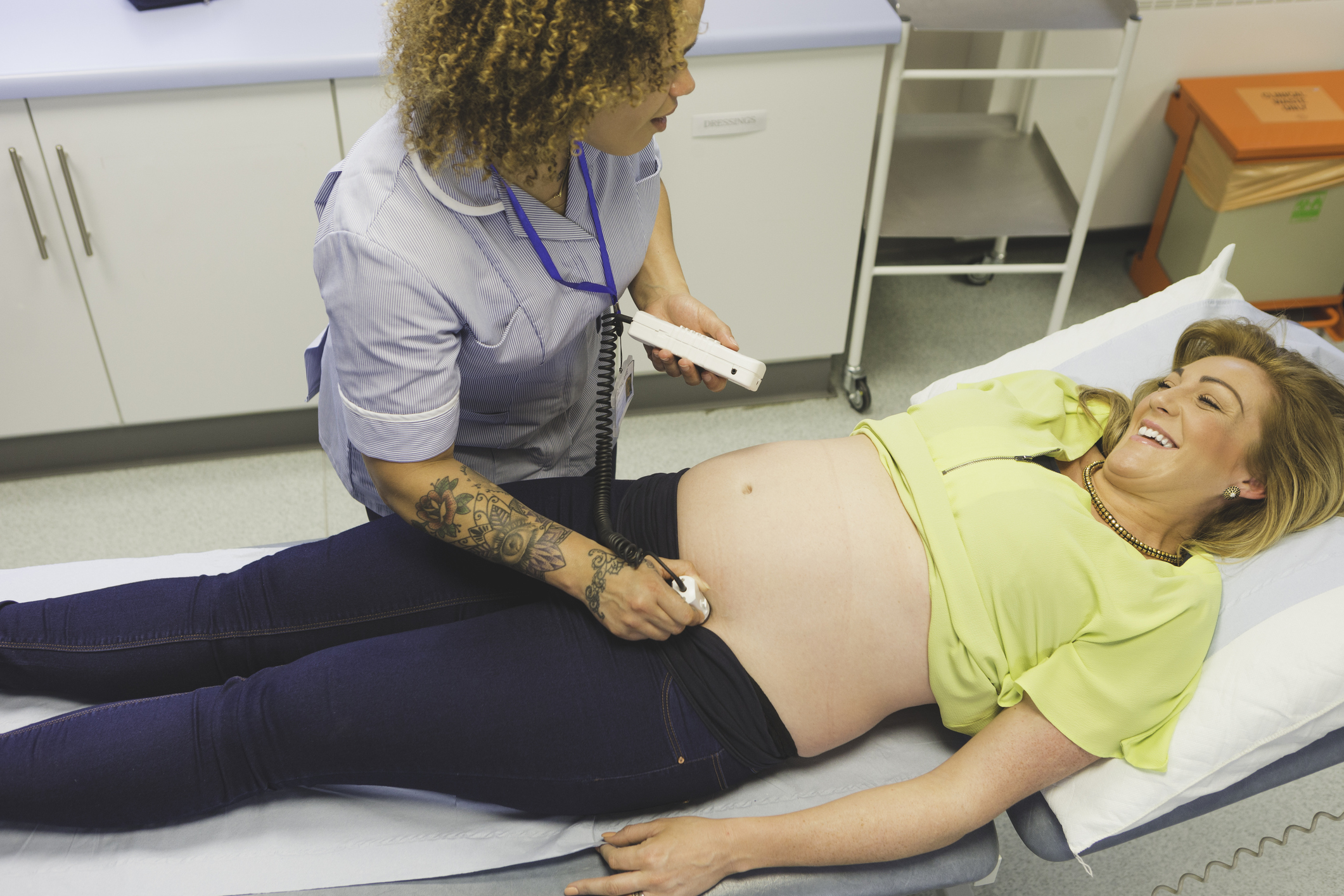Physical Address
Speak to many medical professionals on the other hand, and they’ll tell you there are unwritten rules in many hospitals relating to a doctor’s personal appearance.
Can Doctors Have Piercings? (Explained!)
Piercings can be pretty varied. From small ear piercings to nose rings and studs, how “professional” each looks can be something that divides opinion!
So, can doctors have piercings?
Doctors that have heavy patient contact are generally advised not to have piercings. But that’s mainly because of the conservative nature of the job. Not legal precedent. Most patients are impartial to the idea!
As that answers a little complicated, we’ll go into further in this article.
- If medical professionals should have piercings
- The opinion on nose (and other discreet) piercings
- What’s allowed in med school
- If piercings impact healthcare job opportunities
Ready to learn more? Let’s go.
Are patients really impartial to piercings?
According to a 2015 study published in the BMJ that looked at over 900 patient interactions, exposed body art (including piercings) was said to “not significantly change a patient’s perception of a physician.”
Speak to many medical professionals on the other hand, and they’ll tell you there are unwritten rules in many hospitals relating to a doctor’s personal appearance.
It’s not uncommon for some to ask their employees to remove certain piercings!
Anecdotally, as a med student, I don’t see that many doctors with obvious piercings (besides female doctors wearing earrings or studs). But that’s not to say there aren’t any out there.
Unlike tattoos, another form of body modification that has a controversial reception in healthcare, they’re easier to remove.
Policy, and how it differs across states, countries and continents, is what ultimately decides!
Can anyone have piercings in healthcare?
Piercings, as long as they’re not deemed “offensive”, are generally accepted in the medical field.
Sometimes, in certain institutions, the rules are more relaxed the further you go down the chain of command.
The dress code and personal appearance rules for a doctor, for example, might be very different to that of a lab operator with little to no patient interaction.
What about safety and hygiene?
Perhaps the biggest thing against some piercings is when they are deemed unhygienic or a safety risk.
To determine which types pose a risk, you’d need to examine the type of piercing. Modest piercings, like simple ear studs, would likely be safe. It’s hard for them to catch on any machinery or instruments!
What other factors determine if piercings are OK
- Cultural Climate: Hospitals are diverse settings and differ massively from place to place. What’s deemed appropriate, appearance-wise of U.S. healthcare workers, might be very different to those in a different country.
- Patient Attitudes: Geriatric wards or other areas of a hospital that deal with multi-generations of people might not be the best environments for visible piercings. Prejudice or the opinions of particular patients could make it difficult.
- Type of Piercing: Not all piercings are equal. Ear piercing, especially in women, is arguably more acceptable than tongue, facial or other bodily piercings. It’s up to protocol and managing teams to decide!
Can doctors have nose piercings?
The more discreet a nose piercing, the more acceptable it will generally be.
Nose rings are typically more visible. Certain hospitals might ask rings to be removed or switched out for a less visible stud.
Again this depends on individual institutions. As well as what type of doctor you are and the patients you deal with.
What about med school?
Pre-clinical years of med school, where there’s little to no patient interaction, are very compatible with piercings and other forms of body modification.
Where it becomes more complicated is when you get to clinical-based learning, where students are expected to present themselves to patients.
Here a hospital may request you to cover up or remove a piercing.
Usually med schools have some form of guide for med students to check with before these situations arise.
If in doubt, ask student affairs.
Can piercings impact the chance of landing a healthcare job?
Piercings (similar to tattoos), although it’s difficult to prove, might impact your healthcare employment chances.
Where there’s doubt; it’s probably safe to say it’s not going to help or improve your luck!
Usually it will come down to the attitudes or prejudices of the people involved in the hiring process.
The older they are, the more conservative or ‘traditional’ they might be. As a result, they might have their own attitudes over how “professional” they feel piercings look.
But this is a stereotype and not necessarily true.
Also the landscape has already shifted a lot.
As tattoos and piercings have become more common among attendings, nurses and other key staff, it no longer seems a big deal.
The best way to approach the situation is to probably lean on the side of caution however.
If you have a piercing and are unsure about how it might be perceived, remove it or cover it up initially.
Once you’ve secured the job or got to know the hiring team a little more you can then revisit the issue!
Summary
Doctors can have piercings so long as the hospital allows it.
The factors that typically go into the decision include:
- The type, location and number of piercings
- The patient demographic
- The institutions’ dress-code or protocol
- Unconscious bias in hiring practices
- The “image” a particular hospital or clinic is attempting to portray
Check with wherever you’re keen on working (or already work) to see what they say on the subject. That’s the only way to know for sure!
Personally speaking, I don’t think piercings should be considered a “bad thing”.
So long as a doctor (or whoever else) is competent, does it really matter how they look?
Do patients care if their doctors have tattoos or piercings?
A study reveals if people prefer a more traditional looking doctor.
Recently, researchers found that half of all patients surveyed prefer their doctors to wear traditional attire, such as a white coat, and this influenced an increasingly important measure: patient satisfaction. Many hospitals try to control another aspect of a caregiver’s visual presentation: visible body art or piercings. However, a new study published in the Emergency Medicine Journal suggests that whether a doctor has visible tattoos or piercings doesn’t seem to matter much to the patients they’re treating.
“We were inspired to conduct this study because hospitals have many rules around what constitutes ‘professionalism,’ and some of these rules are excessively stringent and outdated when compared to the general public,” Dr. Holly Stankewicz, associate program director of the Allopathic Emergency Medicine residency at St.Luke’s University Health Network in Bethlehem, Pennsylvania, and co-author on the study, told ABC News. “We set out to see in this case whether patients actually cared about whether their doctor had a tattoo or a piercing, specifically if it affected how they experienced their care, and whether it negatively affected how they perceived their doctor.”

In this study, seven emergency room doctors chose each day to wear one of three options: (artificial) non-traditional piercings, stick-on tattoos, neither, or both for nine months while seeing patients.
One physician had real “full sleeve” tattoos on both arms, so on days he chose to have “no art or piercings,” he wore a white coat to cover them. The doctors wore standard blue scrubs throughout the study period. The patients — all of whom were over the age of 18 — were then surveyed about their satisfaction with care, and specifically rated the doctors’ competence, professionalism, empathy, approachability, trustworthiness, and reliability. The patients were not aware of the purpose of the study.
Two of the doctors didn’t enroll enough patients in the study, and another doctor dropped out due to discomfort with wearing visible body art. Only five doctors’ data made it into the study — males, females, residents and attending physicians. A total of 924 patients were surveyed.

For all five physicians, there was no difference in how the patients perceived their competence, comfort, professionalism, or approachability, whether they had a tattoo or piercing or not. They were rated positively on all surveyed qualities 75 percent of the time, and this showed no statistically significant difference between days they wore a tattoo or piercing compared to days where they did not.
As well, the researchers found that the ratings didn’t change if the patients were over or under the age of 50, or between men and women. Of note, the patients in the study were not asked whether they had body art themselves, or if they disapproved of it.
“It was surprising to see that age wasn’t a big factor. Some of the older patients didn’t even notice the tattoo or piercing, and if they did they would say things like, ‘I like your tattoo,'” Stankewicz told ABC News.
Stankewicz believes the study will help change views around body art.
“At our center, I think it was helpful to change perceptions in both the administration and physicians and staff in general,” Stankewicz explained.
Dr. Myles Spar is an internal medicine doctor at the University of California, Los Angeles (UCLA) School of Medicine who runs a busy practice in Venice, California, where many patients themselves may have tattoos and piercings.

“This is an interesting study given the breakdown of survey results by age of the patient. In my experience, I’ve noticed that much older patients may have more traditional expectations about what their doctor should look like, whereas the younger ones do not,” Spar told ABC News. “It might also be helpful to know if the patients themselves had body art or not.”
There were some other limitations. For instance, it’s unclear if the physicians behaved differently on days they wore tattoos or piercings. Known as the “Hawthorne effect,” it’s a common issue that happens in research when subjects are aware they are being observed.
As such, it’s entirely possible that on days where the doctor wore a tattoo or piercing, they may have behaved more positively towards their patients, who then evaluated them more favorably. As well, given that two doctors dropped out of the study, there may be some selection bias at play: The doctors that remained in the study may have been more confident around their patient communication skills compared to those that dropped out. Regardless, Spar sees the results of the study as encouraging.
“The good thing about this study is that it suggests perceptions are changing. Across the board, patients are looking to their provider as a coach and advisor to work with them and less as a traditional authority figure,” Spar told ABC News. “People recognize that there are excellent physicians of all genders and backgrounds. At my office, we recognize that and something as simple as having casual Fridays, where we wear jeans, makes us more accessible to patients and they are thus more likely to tell us what’s going on with them.”
Dr. Amitha Kalaichandran is a pediatrics resident doctor working in the ABC News Medical Unit in New York.









